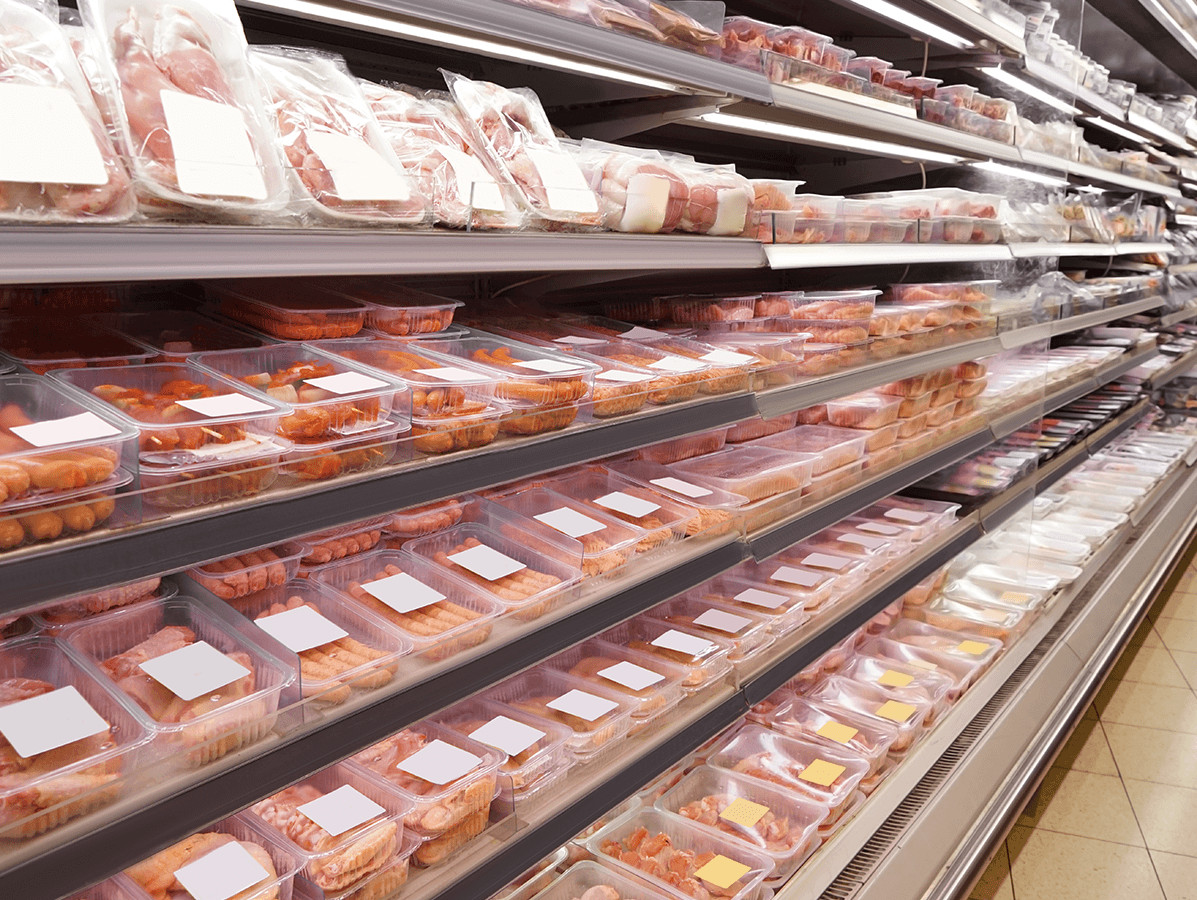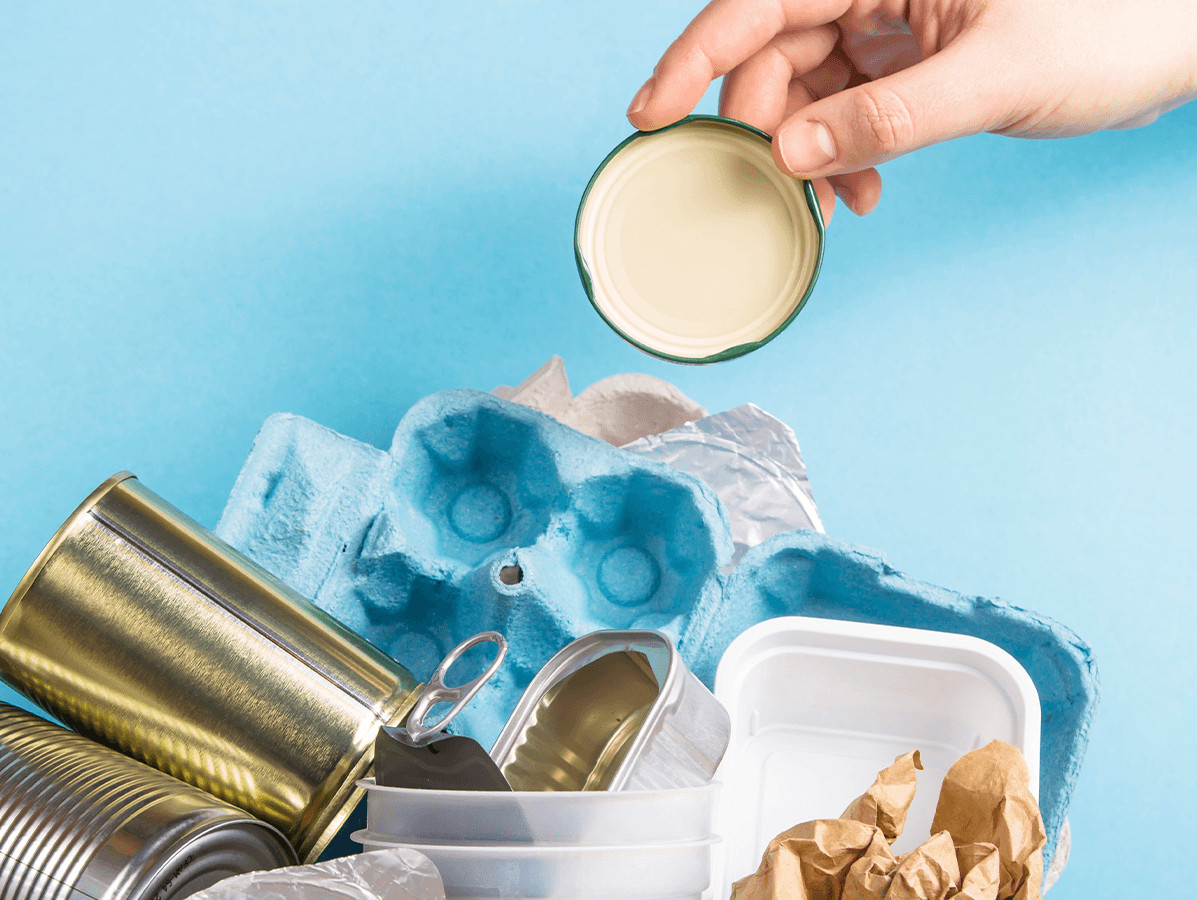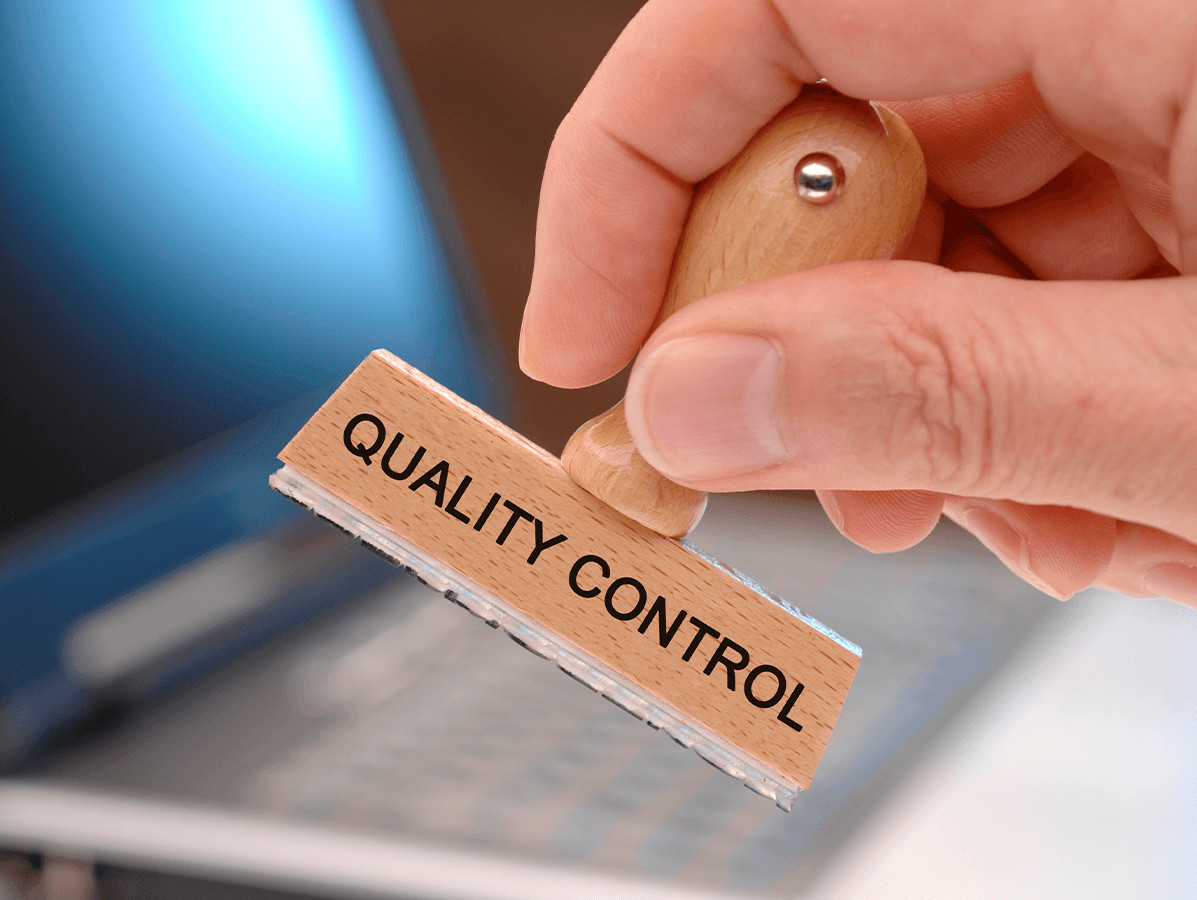
When it comes to food packaging, the top priority is sustainable use of materials. But what is the most sustainable choice? Do you have a choice as a food producer? Are the solutions feasible? And who is ultimately going to pay for it?
How are we going to realise the ambition to have 20% less packaging material in supermarkets by 2025, if at the same time the demand for smaller portions and single-serve packaging is rising? In addition, 95% of the packaging must be recyclable (see Essential Requirements frame). How do you combine the requirement for less material use with the increase in e-commerce (meal boxes, home delivery and pick-up points)? Will new, more sustainable materials still be able to meet the increasingly strict requirements of food safety and food waste prevention? What is involved?
Mart de Koning of MULTIVAC, specialist in packaging, processing, labelling, quality control and robotics solutions, with Remco Krosenbrink of Automator: supplier of coding, marking, labelling and ID solutions for the Benelux, and with Geerd Jan van der Poel of Handelsonderneming PD, technical wholesaler for gas technology.
The way in which the supermarkets want to achieve their reduction ambitions differs per retailer, Mart de Koning experienced: "A customer of ours wanted to have his fresh products packed in cardboard. While one retailer responded with: Great, do it!', another said he didn't want this. It was up to the producer to sort it out. Whereas previously one machine for one specific packaging was enough to package his private label products, now he has to provide a different customised solution for each retailer. The packaging machine must therefore be able to process cardboard one minute and plastic the next. That requires extra investment. Not all that surprising, then, that packaging innovations are finding their way onto supermarket shelves only very slowly."
Remco Krosenbrink: "What is new is minced meat in flowpack packaging. Flow packs are made of strong material. Consumers' fears that they will break down quickly seem unfounded to me. And they are fumigated, which benefits food safety and shelf life, and can therefore prevent food waste."
Mart de Koning: "Beware; to make the flowpack so thin, they often consist of multiple materials for strength. This makes them less recyclable. Less material is not necessarily the most sustainable solution."
Remco Krosenbrink: "Exactly! I get the impression that the retailer mainly wants to say: 'Look how sustainable and innovative we are! What does the consumer choose in practice? They mainly look at the price, right? Supermarkets are afraid of major changes. Imagine that the consumer does not trust the new packaging and switches to the competitor. You should not leave these kinds of developments to the market. That way nothing will ever be achieved. If you want to solve the plastic problem, you have to regulate it centrally, at European level. The change can be accelerated if the consumer asks the supermarket explicitly for different packaging. But that's not how it works; consumers just do their shopping, are perhaps tempted by full-colour packaging and attractive labels, buy what they need or want, pay and go home. Interaction with the retailer is a rare commodity."
About ten years ago, there was a lot of attention for active and intelligent packaging technologies such as spoilage indicators and RFID (radio frequency identification) tags.These innovations have not found their way onto supermarket shelves. These innovations have not found their way onto supermarket shelves, as they have either had limited technical use or the higher costs have outweighed alternative improvements to the food itself. Moreover, there are legislative barriers, such as now for the application of rPET for food packaging. In the Brightlands Material Center in Geleen, a consortium of parties from the production process, retail suppliers and knowledge institutions is currently focusing on the development of fully circular sterilisable stand-up pouches for soups and sauces. Recycling of this type of packaging is not yet possible due to the many properties that packaging for wet food applications has to meet. The results will be presented at the end of 2023. The fact that the entire chain is involved in the innovation process makes the chance of success of this innovation much greater.
In 1975, fresh meat was packed in a protective atmosphere with increased oxygen content for the first time in the Netherlands. A revolutionary innovation at the time, it is now the most widely used packaging technology for fresh meat, fish, cheese and bake-off bread in the Netherlands. Again, no earth-shattering innovations, says Geerd-Jan van der Poel. "The principles of the past still apply. With red meat, the mixture contains more oxygen to retain the red colour; with cheese and bread, it contains less, so that the product does not spoil as quickly. Our task within the process is to advise customers about the application of gas accessories and equipment."

Although we cannot report any truly groundbreaking changes in food packaging, steps are being taken in the right direction when it comes to reduction. It is mainly in the details. At Albert Heijn (AH), for instance, there are trays for meal salads to which ridges have been added. This makes the material just as strong, but slightly thinner. The bowls were also made a little rounder, making them a few millimetres lower with the same contents. The lower scale makes it possible to load the pallets better, which means 660 fewer trucks on the road per year, according to AH. The trays, sealing foil and film for packaging meat products have also become thinner, and the sealing edges narrower in some cases. All in all, the changes will save AH 132,200 kg/year. Jumbo and Hoogvliet apply 'natural branding' to, among others, avocados, pumpkin and gingerroot. This is a technique that uses a laser to burn a hallmark into the skin. Hoogvliet has replaced the plastic packaging with cardboard for part of its range of fruit and vegetables (apples, tomatoes and blueberries). For organic snack tomatoes and lemons, the retailer has introduced fully compostable packaging.
Essential requirements
All producers and importers of packaged products are, according to the Packagings Management Decree, legally obliged to ensure the prevention, collection and recycling of packaging. This is called producer responsibility. They must also ensure that this packaging complies with the 'essential requirements'. For example, you must ensure:
- limitation of the weight and volume of the packaging to the minimum quantity necessary to maintain the required level of safety, hygiene and consumer acceptability;
- minimisation of the presence of hazardous substances and materials as part of the packaging material or of the packaging components;
- design and use of reusable or recoverable packaging.
We hardly see any black plastic packaging in the supermarket anymore. PLUS has phased them out completely. Because the material is coloured with carbon black, it cannot be identified in sorting installations. A step further in optimising the recycling process is not to take something away, but to add something. The new CurvCode, developed by FiliGrade, works like Braille. Plastic (PP/PET/PE) and paper laminate packaging can be marked with a number of raised dots that allow the material to be recognised. This allows waste processors using special detection equipment to mechanically separate the different types of plastic. This is an important step towards using plastic food packaging within a circular plastic chain.
Mart de Koning was closely involved in the CurvCode project from the start. "After an intensive preparation process, in which the MULTIVAC team was constantly thinking and testing, our customer, fish producer Bond Seafood, recently became the first food processor to bring this waste separation innovation to market. The recycled PET (rPET) trays with smoked mackerel and herring fillets, as well as the code, have recently become available in supermarkets." Bond Seafood has long been open to better waste separation and reuse of plastic packaging and is actively working on this. They want to be a pioneer and contribute to a better reuse of this type of packaging. Last year, Bond switched to all mono PET material for all its packaging. CurvCode is a new step in the right direction, to work together towards better waste separation, Mart de Koning believes. "As an industry, we also have a social responsibility. That's why we like to think along in terms of sustainable (environmental) solutions and the fine-tuning of packaging and the machines. For example, we are testing alternative materials for packaging, including elephant grass, and we are working on mouldable cardboard."
Are the alternatives always better? In the Plastic Pact between the Dutch government and industry, it was agreed in early 2019 to make the switch to plastics from sustainably produced bio-based raw materials. Not so much to solve the plastics soup, but to reduce the dependence on fossil raw materials and to achieve climate targets. The so-called bioplastics can be materials that are made from biomass, yet they have exactly the same properties as ordinary plastic. But they can also be materials that are only compostable in an industrial facility that works with temperatures up to 65 degrees. And finally, there are bioplastics that you can throw on the compost pile. In short, although 'bioplastic' sounds sustainable, in practice the term mainly leads to confusion among consumers and problems for recycling companies.

Whether the packaging material is sustainable or not, consumers demand honest and clear information. Remco Krosenbrink: "In the past, producers could get away with a 50 x 60 mm label. Now there are so many legal requirements that it's almost impossible to make such a 'small' label. From product specifications, the mentioning of all allergens and the place of origin up to and including the mandatory character size and whether something should be printed in bold or not; everything is bound by rules. This has more consequences than just a slightly larger label. Food producers often had to change the design of their packaging, and with it, the systems to handle the packaging and the larger labels."
Vomar warns for ham. Due to a production error, the packaging contains a different product. Because of this, the allergens wheat, mustard and soy are missing on the label...'. Or: 'SPAR warns for grilled chicken salad. Due to a mix-up in the dressing, the allergen milk is not on the label. The salad is therefore not suitable for consumers with a milk allergy...'.
In practice, many things can go wrong in the production process.
Remco Krosenbrink: "As a food producer, you want to prevent this at all times. A mistake is easily made, for example when changing products, or the wrong label roll is picked up by mistake. Then the top label does not match the bottom label, or the label does not belong to the product that is being packaged at that moment. The longer it takes for the error to be discovered, the greater the consequences. After only ten minutes, a lot of products have to be returned. That is why we build scanners into our machines. This way, there is a continuous check: whether the correct labels are attached to and under the packaging and whether the barcodes are legible."
"Customers are shouting for control," confirms Geerd-Jan van der Poel. "Leak detection on the production line is also on the rise as a result. In the past, 10 trays were randomly checked every hour; now producers want to monitor quality continuously. Thanks to in-line testing, a signal is immediately sent to the production line if things are not right. Errors are immediately ejected and the production employee can intervene immediately. The transport costs for recalling and destroying products are high, not to mention the damage to reputation that is caused if a fault is discovered too late. The costs of a recall can be substantial."
Production speeds and output are going up. Control on the production line and reliable equipment are essential to ensure continuity. Meanwhile, the entire industry is struggling with staff shortages, which in turn endangers continuity. Mart de Koning: "Due to problems in finding and keeping staff in the food industry, it becomes increasingly difficult to man the production lines. Producers want more and more fully automated robotics solutions. Because of the high turnover, we try to make the packaging lines as 'foolproof' as possible. Everyone must be able to work with them. Maintenance and troubleshooting are almost always outsourced in service contracts these days."
" One aspect related to this is that machines and equipment are renewed more quickly these days," observes Geerd Jan van der Poel. "In the past, I often came across equipment that was over 25 years old. Even if it eventually became very difficult to replace parts, that was no reason for companies to invest in a new machine. Now we see that manufacturers are much more concerned with preventing failures and improving operational reliability. Looking ahead to the future. I like that."
New measures and requirements
- Since 3 July 2021, meal boxes made of EPS plastic or foam have been banned by new EU legislation. Just like all other EPS food packaging. The main alternative is 'bagasse' (sugar cane).
- Producers of plastic products that are frequently found in litter will pay the cost of cleaning up (litter) from 5 January 2023. This applies to, among others, packaging, drinking cups, light plastic bags, moist wipes, tobacco products (with filters) and balloons. Producers must provide consumers with information on how to prevent litter.
- As of 3 July 2024, caps must be attached to plastic bottles and drink containers. This way, they are automatically returned for recycling and do not end up in litter.
- PET bottles must consist of at least 25% recycled plastic by 2025. By 2030, this should be at least 30%. The government will provide consumers with more information about reusable alternatives to disposable plastic.
Photo shelfs: ©belchonock/depositphotos, photo waste: ©Valeriia Samarkina/depositphotos, photo stamp: ©filmfoto/depositphotos
Source: Vakblad Voedingsindustrie 2022